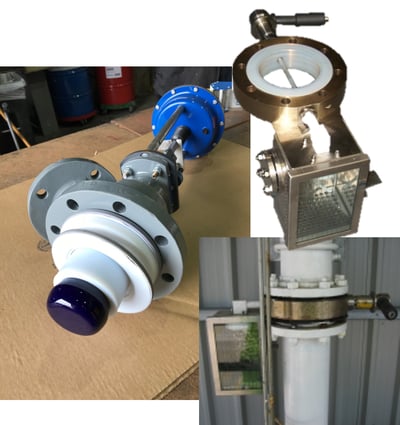DIN vs ANSI: What’s the Difference?
 DIN and ANSI are two different standards organizations used in engineering, manufacturing, and product design. DIN is metric-based and primarily used in Europe, while ANSI is imperial and used in the U.S. They differ in dimensions, measurements, and applications, making them not interchangeable.
DIN and ANSI are two different standards organizations used in engineering, manufacturing, and product design. DIN is metric-based and primarily used in Europe, while ANSI is imperial and used in the U.S. They differ in dimensions, measurements, and applications, making them not interchangeable.
What Are DIN and ANSI Standards?
DIN (Deutsches Institut für Normung)
- DIN is a German organization that stands for "Deutsches Institut für Normung," which translates to the "German Institute for Standardization."
- DIN standards are widely used in Germany and many other countries in Europe. They are known for their high-quality engineering and technical standards.
- DIN standards are often identified by a "DIN" prefix followed by a unique number (e.g., DIN 476 for paper sizes, DIN 912 for hex socket head cap screws).
- DIN standards cover various industries, including engineering, manufacturing, and construction.
ANSI (American National Standards Institute)
- ANSI is an American organization known as the "American National Standards Institute."
- ANSI standards are widely used in the United States and, to some extent, in other countries, particularly in North America.
- ANSI standards are often identified by an "ANSI" prefix followed by a unique number or by specific designations related to the standard (e.g., ANSI B16.5 for pipe flanges and flanged fittings, ANSI C language standards).
- ANSI standards cover a broad spectrum of industries, including manufacturing, technology, and safety.
Comparison: DIN vs ANSI Standards
|
Feature |
DIN Standards |
ANSI Standards |
|
Region of Use |
Europe |
United States |
|
Measurement System |
Metric |
Imperial |
|
Common Designation |
DIN 912, DIN EN 1092 |
ANSI B16.5, ANSI C |
Are DIN and ANSI Standards Interchangeable?
While both DIN and ANSI standards are important and widely respected in their respective regions, they are not always compatible or interchangeable. This can be particularly relevant in areas where international or cross-border cooperation is required. In such cases, organizations and industries may need to ensure that they are using compatible standards or find ways to harmonize them.
How De Dietrich Handles DIN and ANSI Requirements
As a global manufacturer with customers all over the world, De Dietrich offers equipment solutions that satisfy each standard.
- QVF glass systems: Available with bellow and adapter flanges for ANSI 150# Class or DIN EN1092 PN10.
- Glass-lined vessels: Feature split loose flanges that can be supplied as either ANSI 150# Class or DIN.
Why the Difference Between DIN and ANSI Matters
It's essential to be aware of the specific standards relevant to your industry and location to ensure compliance and compatibility with regulations and best practices.
Here’s why choosing the correct standard is critical:
- Prevents mismatched components
- Ensures regulatory compliance
- Improves system performance and safety
Need Help Choosing Between DIN and ANSI Standards?
Have additional questions about DIN vs. ANSI and how it relates to your project? Contact us and we can help!
